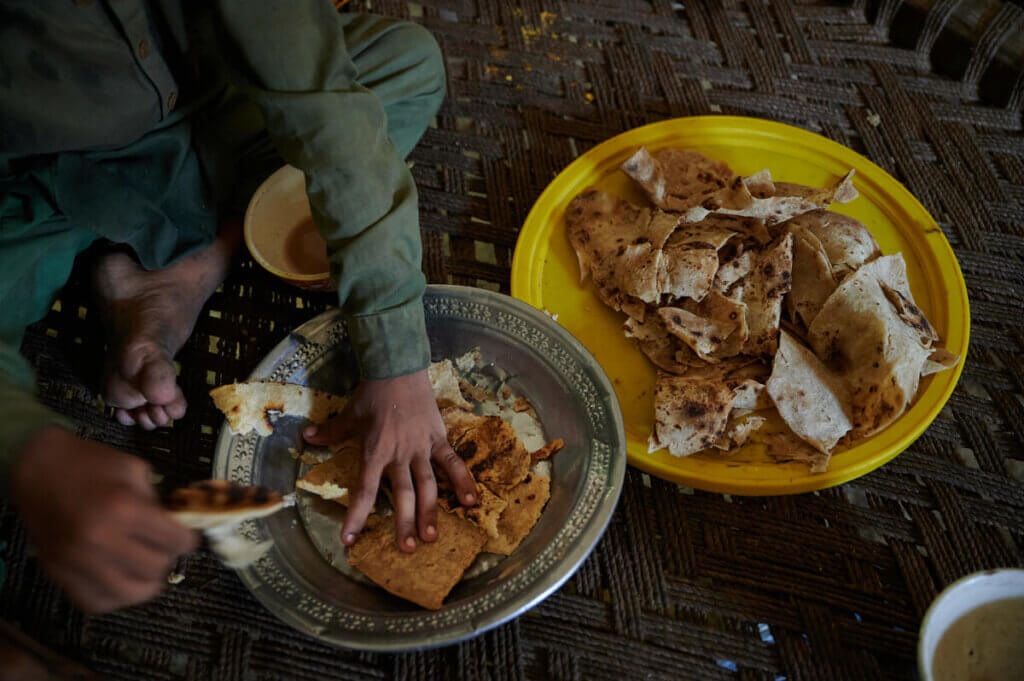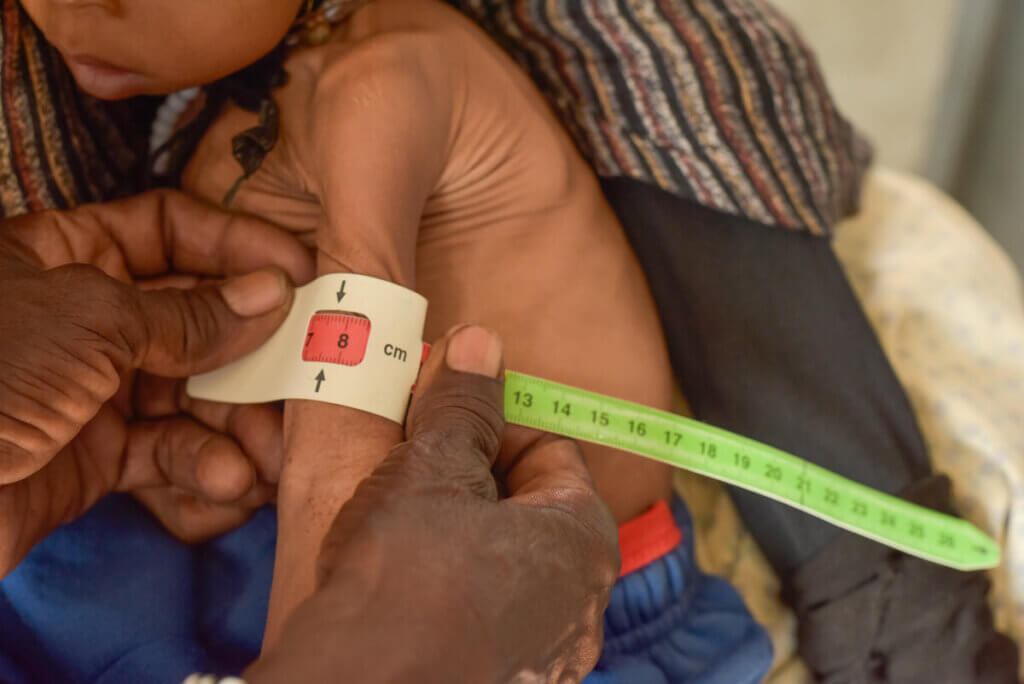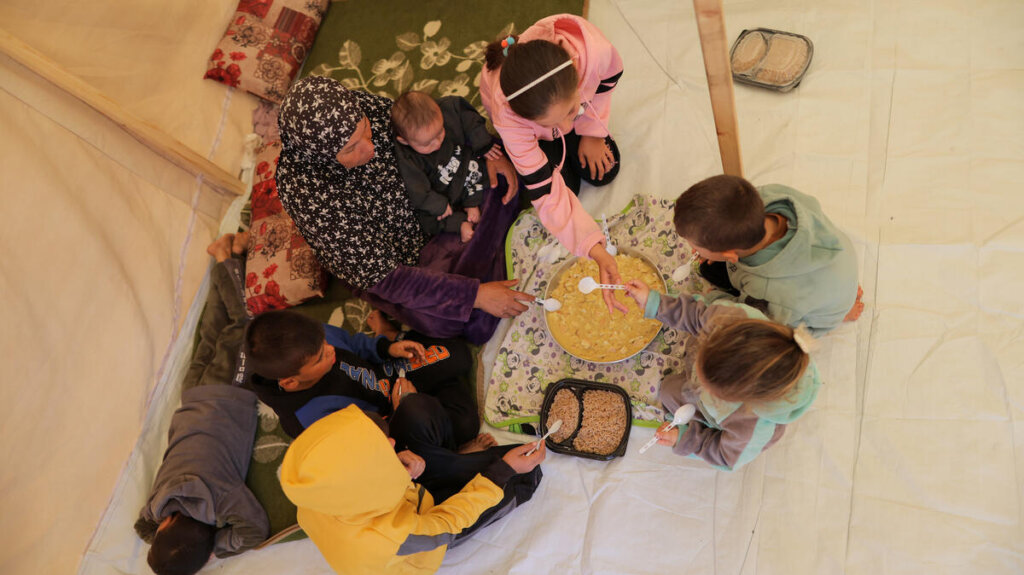
As we enter a week centered on nourishment and togetherness, countless families worldwide are facing a very different reality—one defined by hunger, scarcity, and fear.
Right now, we are facing a global hunger crisis that spans dozens of countries and affects hundreds of millions of people. In 2024, more than 295 million people across 53 countries and territories faced crisis levels of hunger or worse—and early 2025 updates show no signs of relief. Conflict, forced displacement, and climate extremes continue to push hunger rates even higher.
In places such as Gaza and Sudan, where violence has destroyed supply chains and displaced millions, entire populations are teetering on the brink of famine. And as with most crises, women and girls are being disproportionately impacted.
During crises, women and girls often eat last and least. But the impacts of hunger extend far beyond hunger pangs; malnutrition directly affects sexual and reproductive health. Without adequate nutrition, pregnant women face significantly higher risks of anemia, preeclampsia, stillbirths, miscarriages, gestational diabetes, and dangerous complications during childbirth. Their babies are also more likely to be born prematurely and require medical care that is often unavailable in crisis settings. Incidents of violence against women also skyrocket in households facing food insecurity.
The global hunger crisis is intrinsically tied to the health, safety, and futures of women and girls. That’s why we’re working with partners around the world to reach them with lifesaving medical care.

Nearly all of Gaza faces life-threatening hunger
Here is where the current hunger crisis in Gaza stands:
— More than half a million people could starve to death at any moment
— 15% of newborns require intensive care, even as hospitals, fuel, and supplies continue to collapse.
Even after the October 2025 ceasefire—which has allowed more aid to enter—conditions have not improved enough to change Gaza’s famine classification, and deliveries remain far below the level needed.
Hunger is making pregnancy and the first months of motherhood dangerous and, too often, tragic. Many new mothers are now too malnourished to produce breast milk, while infant formula has grown scarce and astronomically expensive, leaving families with no safe alternatives.
One mother, Iman, has been displaced so many times she’s lost count. After managing to deliver her newborn son safely at a hospital, she had to walk miles back to the tent where her family now lives. Survival has been an uphill battle ever since.
“When he was two weeks old, the baby formula ran out, and there was nothing else to feed him,” she told us. “He became malnourished… I was forced to feed him a biscuit, even though I knew it was dangerous.”
Her plea echoes across Gaza: “We just want to rest. We don’t want to hear the sounds of bombing and gunfire anymore. We want to return home.”

Famine declared across multiple areas in Sudan
More than two years after war broke out, Sudan continues to be the largest humanitarian crisis in the world. At the peak of the lean season in late 2025, 21.2 million people—45% of the population—were facing crisis-levels or worse of hunger. Even now, as the harvest offers a small measure of relief, around 19.2 million people remain acutely food insecure.
Within this staggering total are the people most vulnerable to hunger-related illness and death: 4.9 million children under the age of five and 1.2 million pregnant and breastfeeding women. Famine has been declared in at least ten areas in Sudan, and widespread flooding has destroyed crops, displaced families, and pushed additional communities closer to the brink.
For pregnant women, the consequences of hunger are devastating. One displaced woman, Lubna, shared her fear plainly: “How could I guarantee the safety of my unborn child, my six children, and myself? Who will help me in these terrible circumstances?”
Hunger is also driving a rise in violence. With food scarce and resources often controlled by men and boys, women and girls may be forced into transactional sex to survive. More than 12 million people in Sudan are now considered at risk of violence, including sexual violence, child marriage, and harmful practices such as female genital mutilation.

The work you make possible
The global hunger crisis is a sexual and reproductive health crisis. That’s why UNFPA is providing critical nutritional support and lifesaving care to women and girls wherever the need is greatest.
Across crisis settings, our teams distribute essential micronutrients like iron folate and vitamin A, deliver prenatal and postnatal care, support safe births, and provide medical follow-up for malnourished mothers and newborns. Mobile health teams reach women who cannot safely travel, while cash and voucher assistance helps families purchase food and other essentials even as prices soar. Together with partners, we ensure that women, girls, and newborns have access to the care, protection, and basic necessities they need to survive and recover.
Thanks to our supporters, we are there with women and girls no matter what. As we enter the giving season, thank you for standing with us when it matters most. Together, we are making a real impact on the lives of millions. And in this moment of urgent need, your support can go even further.